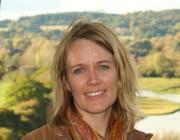Citation:
Abstract:
This study demonstrates linkages between the 1997/98 El Niño/Southern Oscillation index and a threshold shift to increased permafrost loss within a southern Taiga Plains watershed, Northwest Territories, Canada. Three-dimensional contraction of permafrost plateaus and changes in vegetation structural characteristics are determined from multi-temporal airborne Light Detection And Ranging (LiDAR) surveys in 2008, 2011 and 2015. Morphological changes in permafrost cover are compared with optical image analogues from 1970, 1977, 2000, and 2008 and time-series hydro-climate data. Results demonstrate that significant changes in air temperature, precipitation, runoff, and a shortening of the snow-covered season by 35 days (1998-2014), and 50 days (1998 only) occurred after 1997. The albedo reduction associated with 35 and 50 days less snow cover leads to increases in shortwave energy receipt during the active thaw period of ~12% (3% annually) and ~16% (5% annually), respectively. From 2000 to 2015, sporadic permafrost loss accelerated from 0.19% (of total basin area) per year between 1970-2000 to 0.58% per year from 2000 to 2015, with a projected total loss of permafrost by ~2044. From ~1997 to 2011, we observe a corresponding shift to increased runoff ratio. However, observed increases in the proportion of snow precipitation and the volumetric contribution of permafrost loss to runoff post-1997 (0.6 to 6.4% per year) cannot fully explain this shift. This suggests increases in drainage efficiency and possible losses from long-term groundwater storage as a result of subtle terrain morphological and soil zone hydraulic conductivity changes. These hydrological changes appear coincident with high vegetation mortality at plateau margins combined with succession-related canopy growth in some bog and fen areas, which are presumed to be drying. Similar changes in runoff response were observed at adjacent Birch, Trout and Jean-Marie River watersheds indicating that observations are representative of northern Boreal sporadic permafrost/wetland watersheds in the Taiga Plains.


